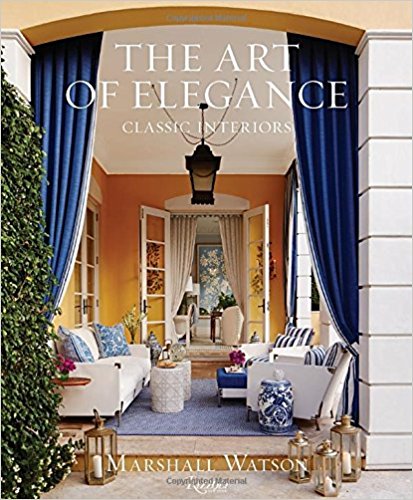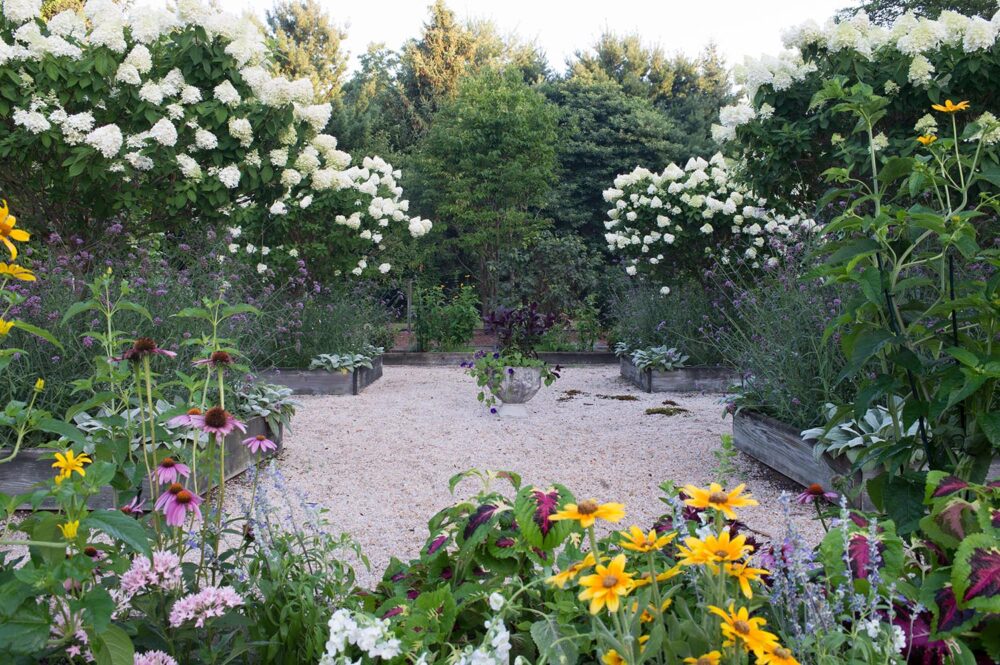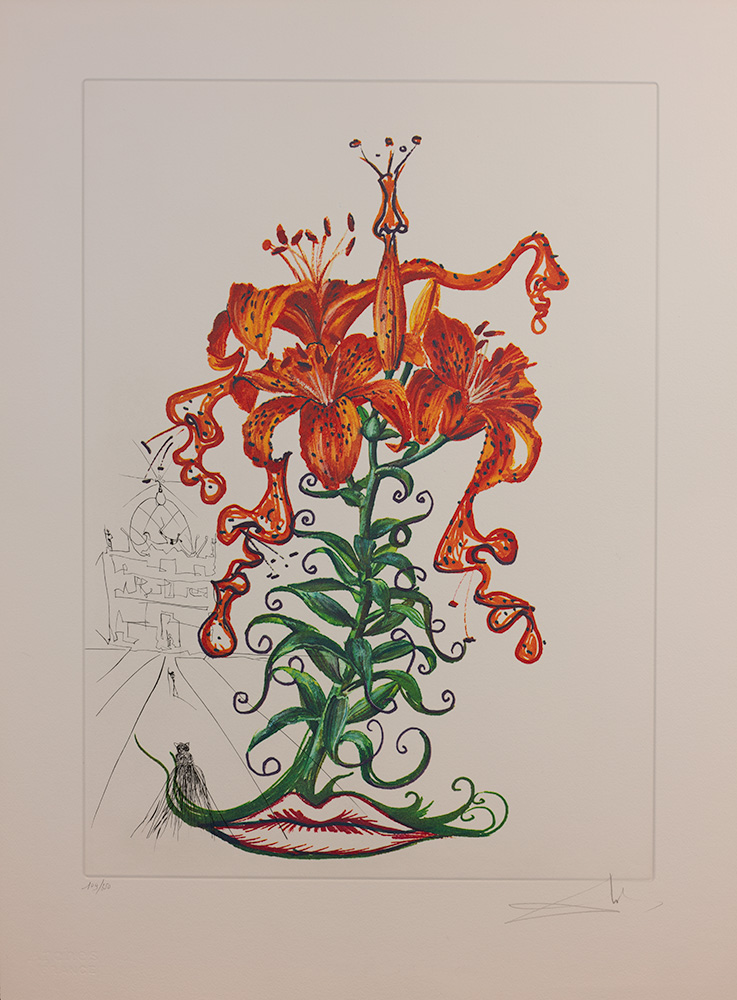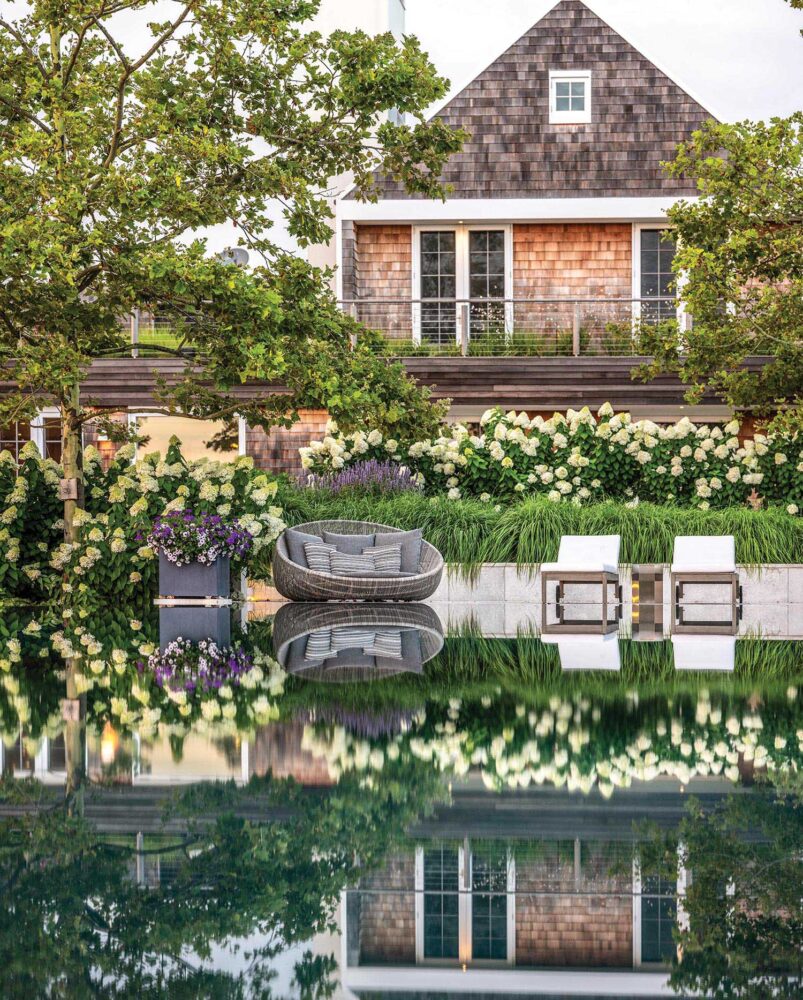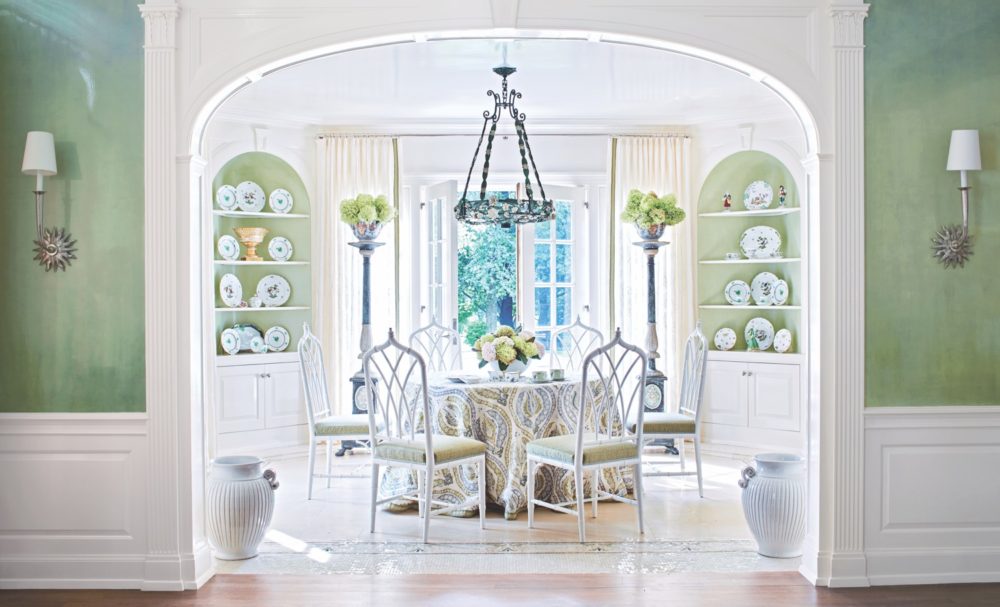
Marshall Watson gave the sunroom of a St. Louis home the air of a conservatory with a marble mosaic floor and late 19th-century plant stands with colorful cartouches. Photo Max Kim-Bee
When New York-based designer Marshall Watson starts a new project, he does a curious thing—he absents himself. Not literally of course; you can still count on him to show up at the appointed hour, but at the end of the process, you won’t find a house with a “Marshall Watson interior” because the designer views himself “as a conduit for other people’s vision and aspirations.” Watson spends a large amount of time getting inside his clients’ heads, so to speak, which comes naturally for the designer because acting was one of his earlier career experiences.
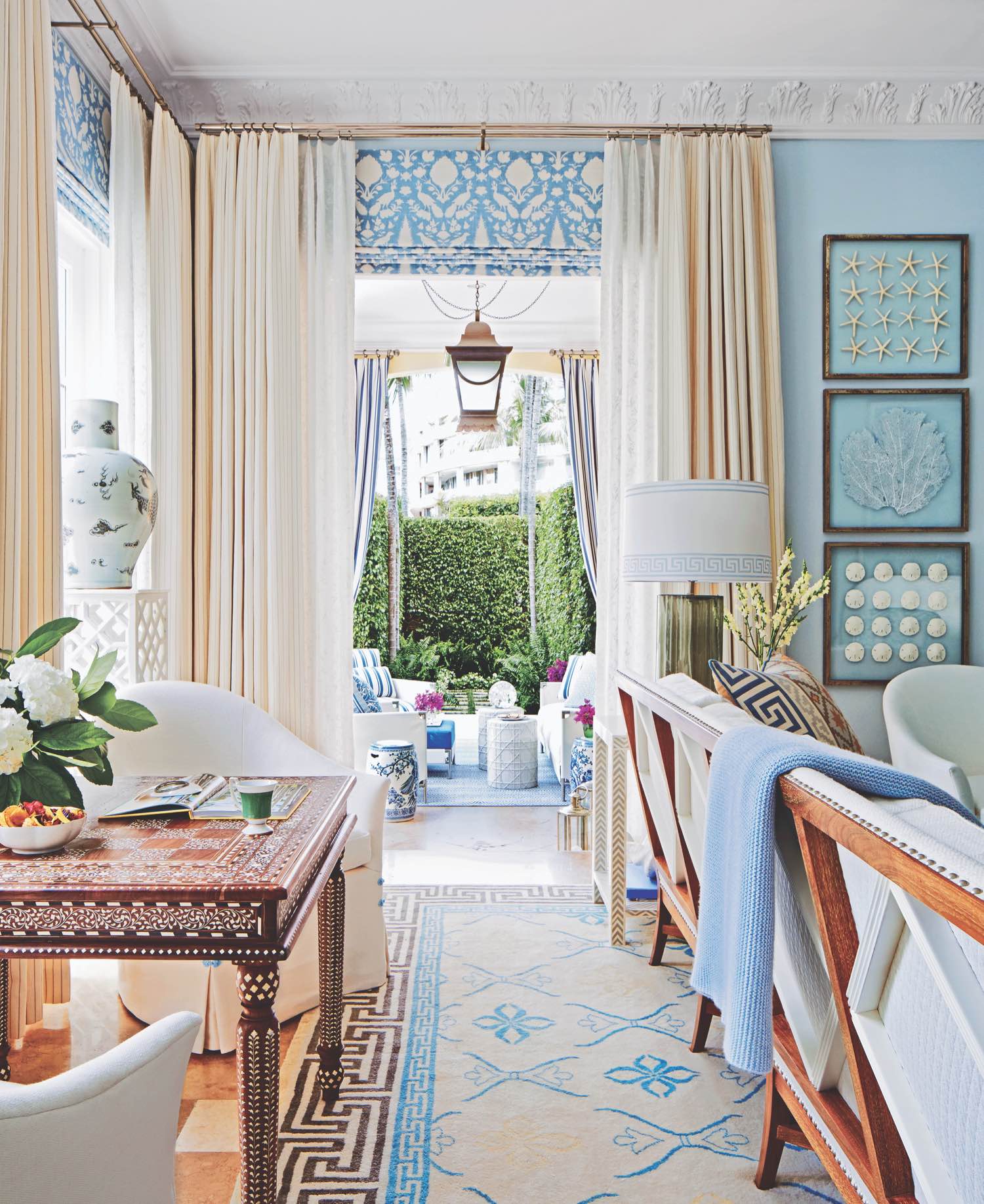
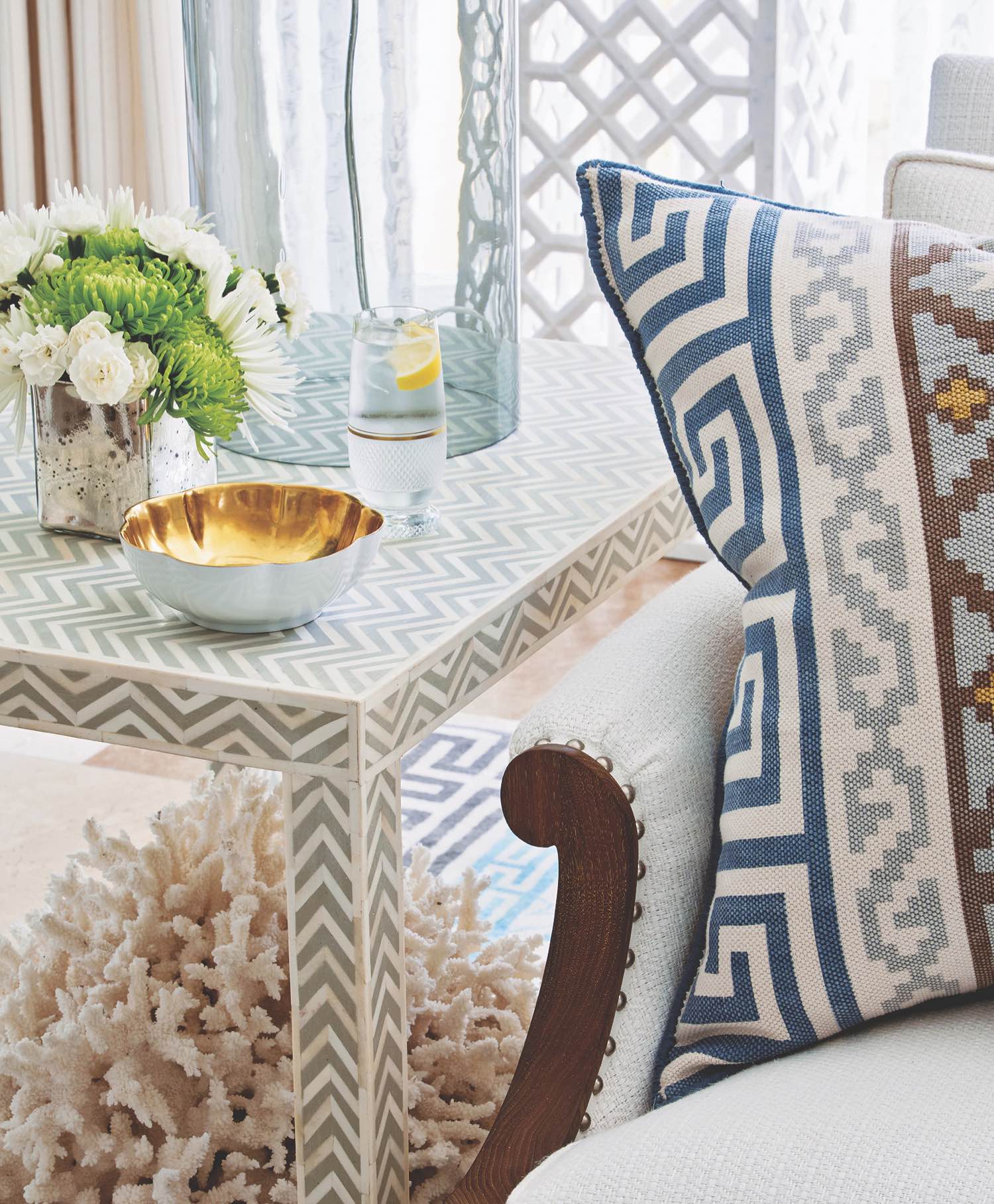
Marshall Watson
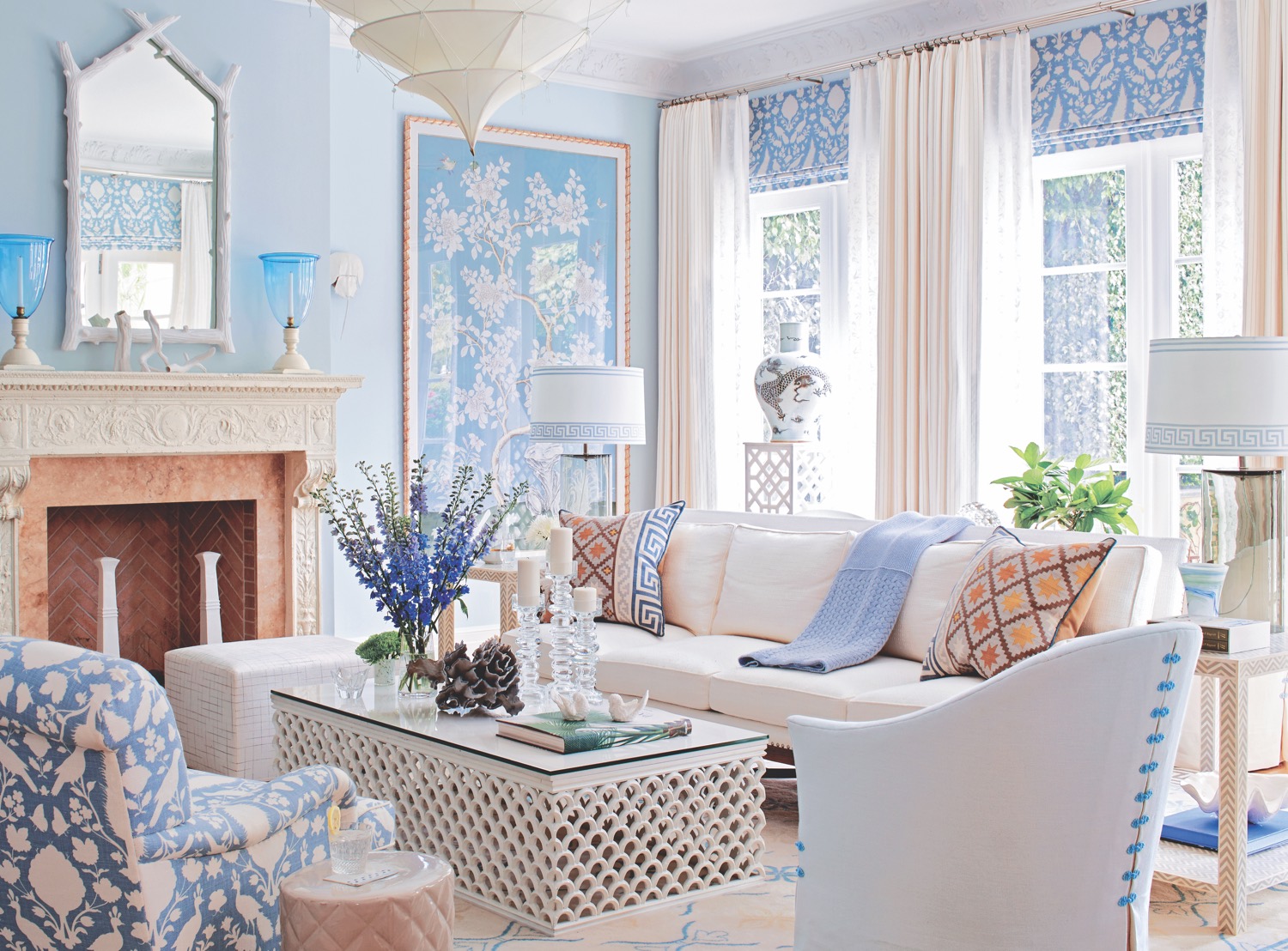
“I gravitated toward the character roles—I enjoyed losing myself and taking on another’s persona completely,” he explains. While he may not have an instantly recognizable aesthetic, he does have some design edicts he strives for—he mentions words such as “balance, proportion, livability, light, and warmth.” These “ fingerprints,” as he calls them, are seen throughout his work. They are perhaps best grouped under the umbrella of elegance— Watson’s favorite word to describe his 30 years as an interior designer; hence the title of his new book, The Art of Elegance (Rizzoli New York, 2017).
– Marshall Watson
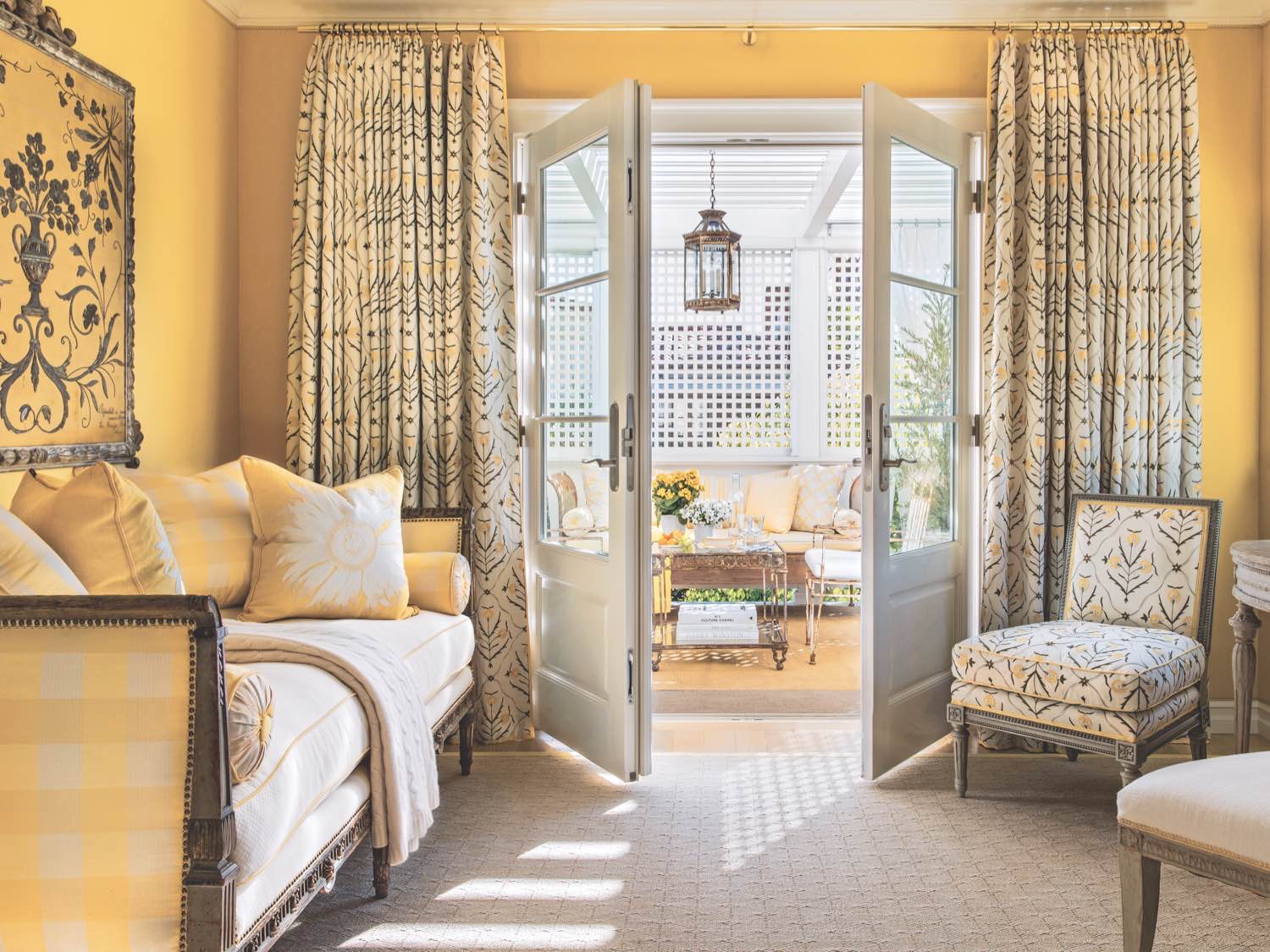
For this sunny room that opens to a veranda, Watson included luxurious embroidered curtains, silk-upholstered walls, and a French neoclassical daybed. Photo by Lisa Romerein
While doing a gentle psychoanalysis of his clients, Watson is also passionately considering the setting of each project, whether it’s a piece of property overlooking the Sea of Cortez in Mexico, an island in the Stockholm archipelago, a Bahamas getaway, or family homes in St. Louis, Salt Lake City, and New York. “It’s essential that the design be in harmony with the setting and that the indoor and outdoor spaces relate to each other,” says Watson, “and I usually do a layout of the garden when planning everything else.”
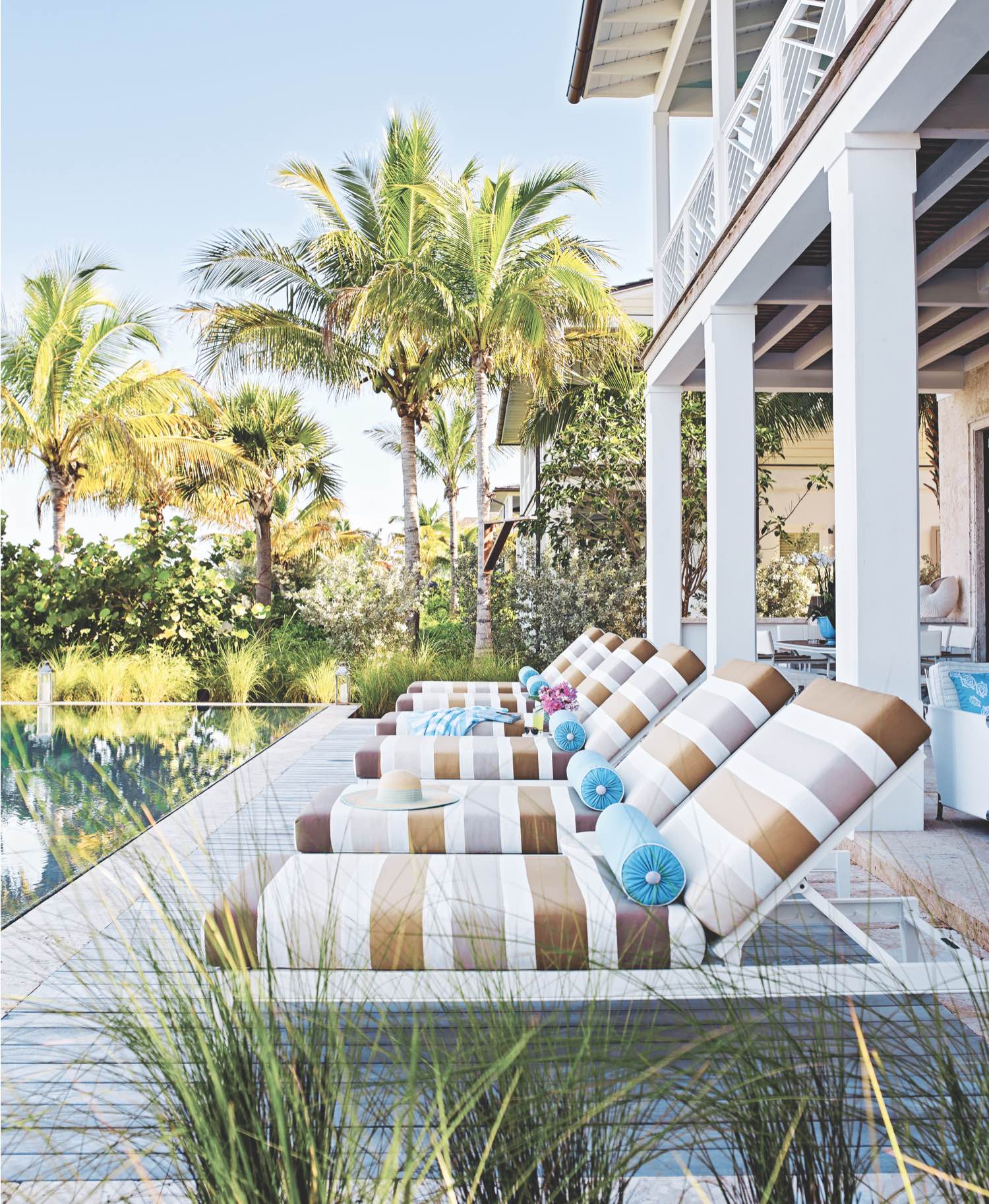
Watson chose a bold stripe for the outdoor chaises with a playful bright blue for the pillows. Photo by Francesco Lagnese
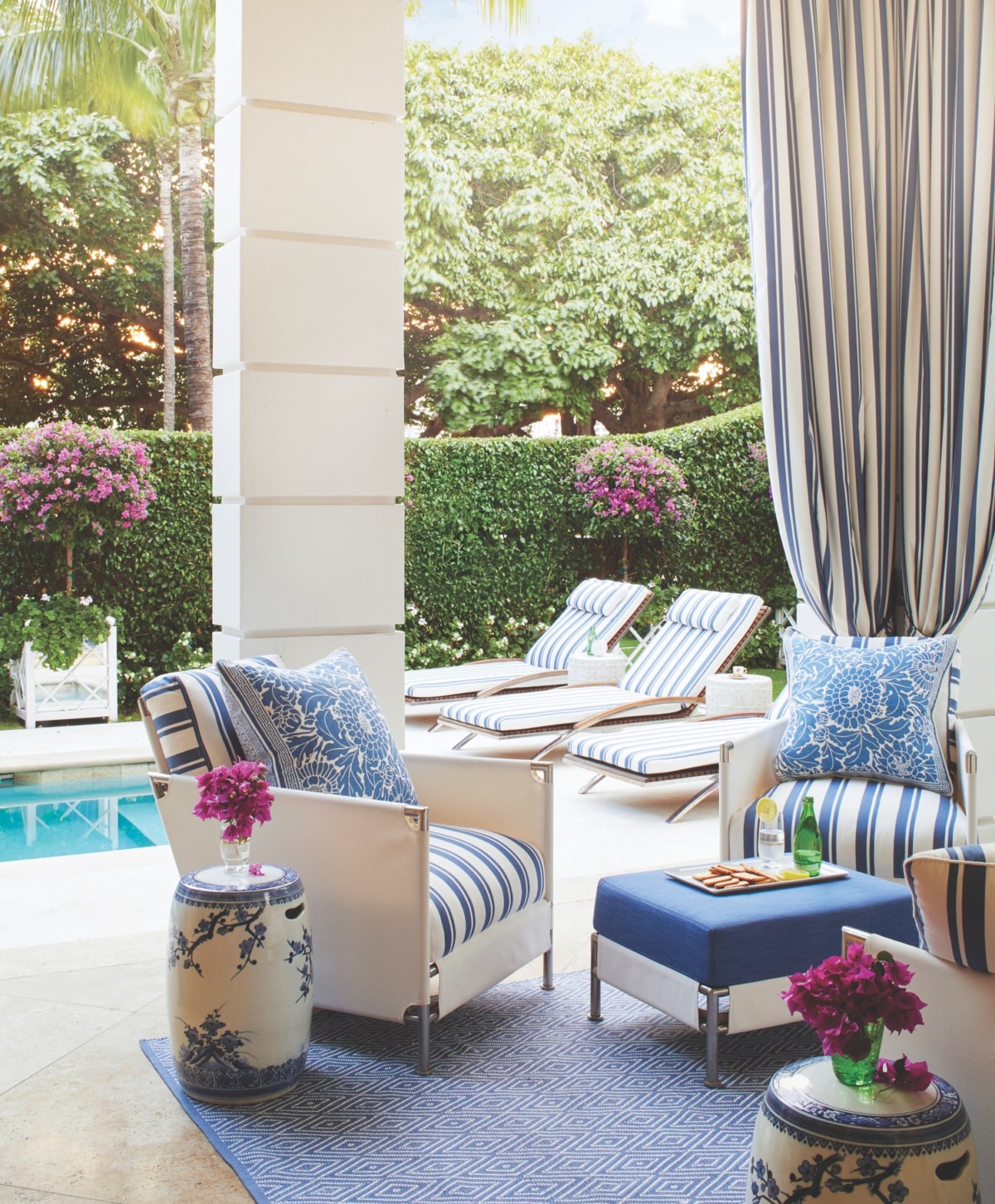
Long curtains and bougainvillea add color and bring a chic attitude to the back garden. Photo by Max Kim-Bee
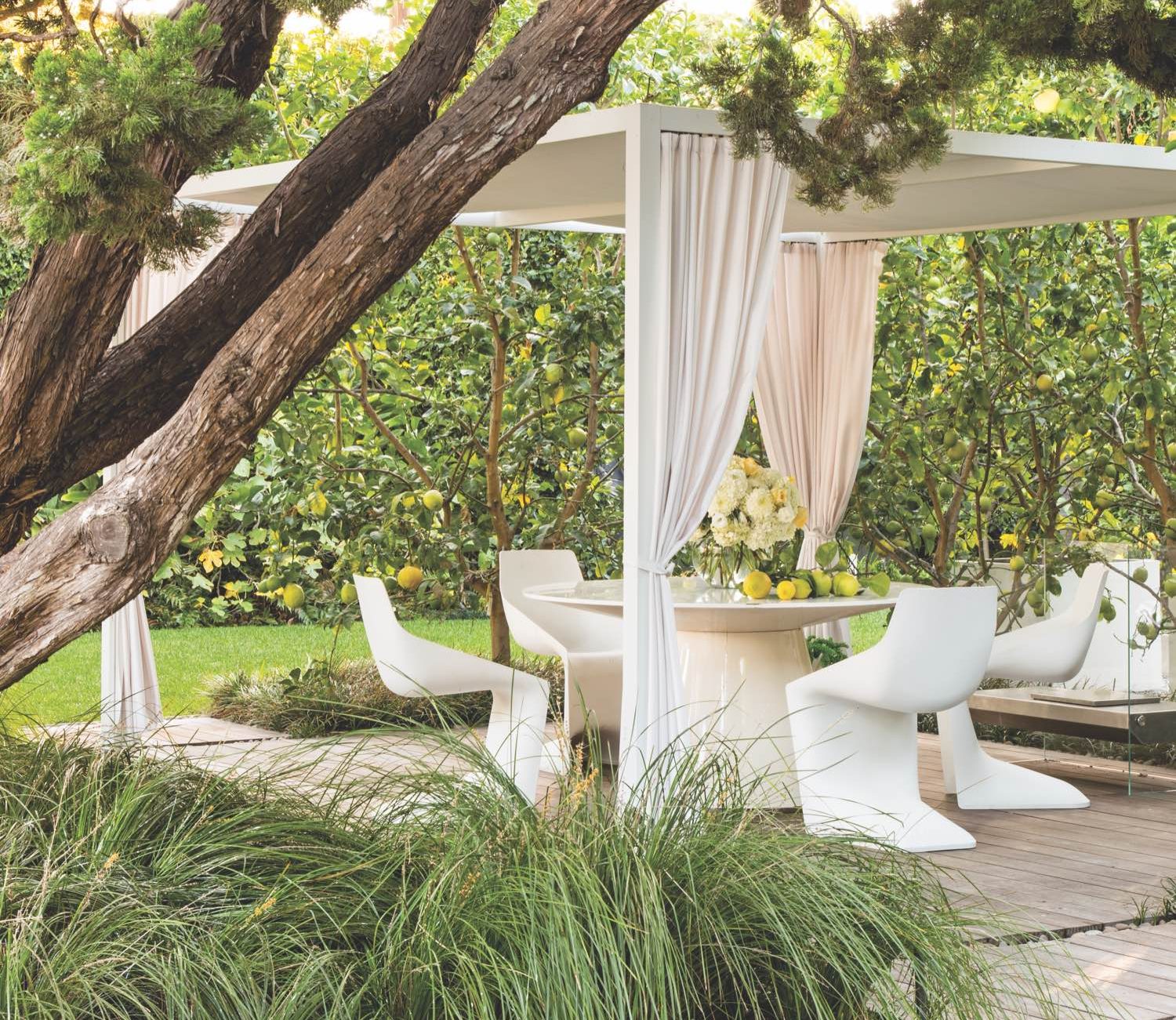
An outdoor space by designer Marshall Watson shows off the power of white.
His appreciation of the garden came a little later in life. Growing up in Kansas City, Missouri, Watson viewed being in the yard as a type of torture. “My brothers and I were in constant service to my father’s obsessions—a perfect green lawn, formal English gardens with 250 rose bushes, camellia trees, and an organic vegetable garden,” he recalls. “We were always pruning, weeding, and spraying, and we really resented it at the time.” Interestingly, all three boys have returned to their roots in their own way. Watson’s current passion came about when working at his home in East Hampton, which he purchased in 1999. “Now I truly like roses and grow them myself,” he says with a laugh. “But actually, my garden and gardening are essential to my life.” And his clients are the beneficiaries.
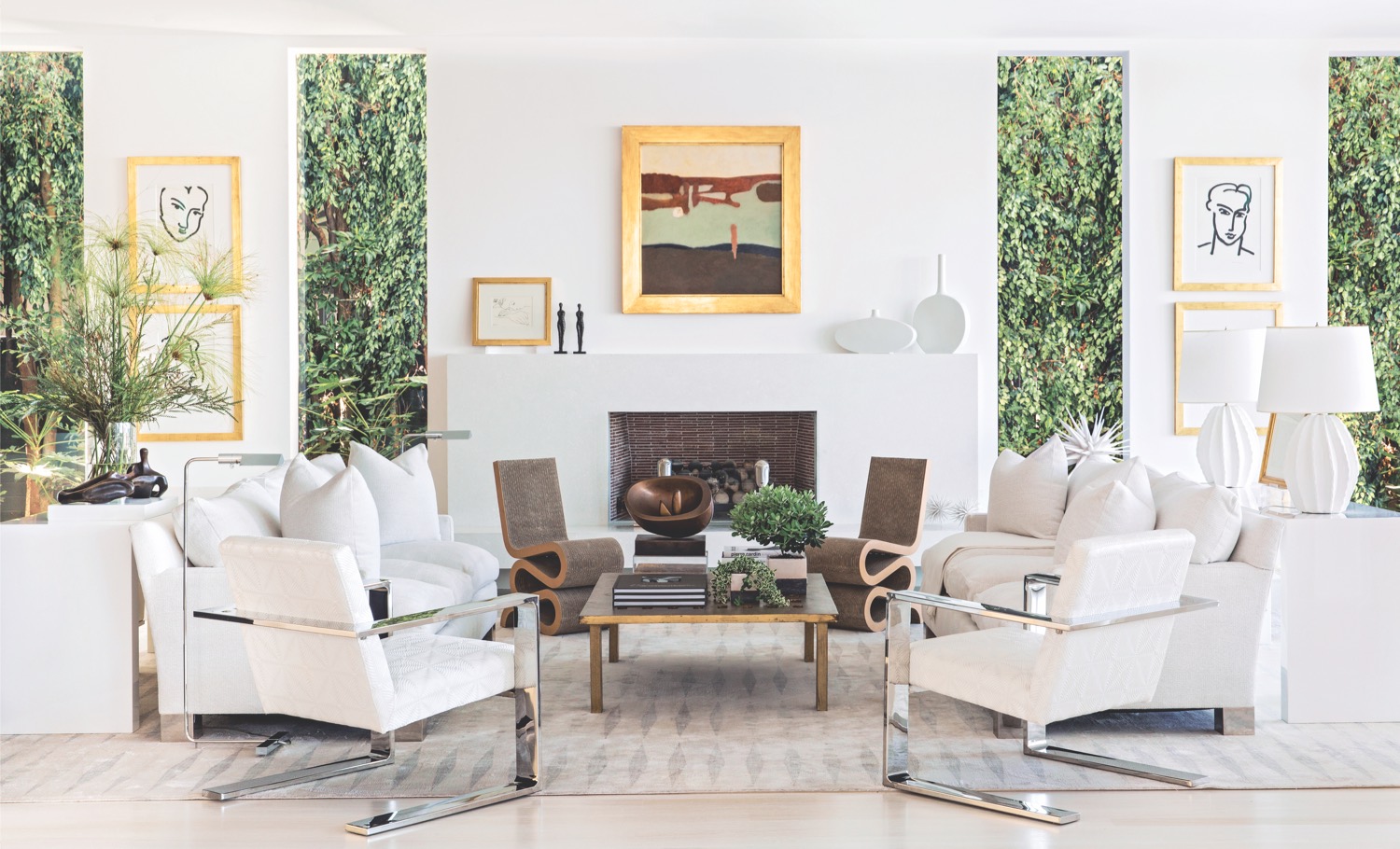
This pristine living room in California reveals treasures such as Matisse and Picasso drawings and Frank Gehry chairs. Photo by Lisa Romerein
–Marshall Watson
MORE MARSHALL WATSON INTERIORS
By Alice Welsh Doyle
The Art of Elegance: Classic Interiors (Rizzoli New York, 2017)

